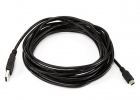Sky Blue
Member
- Joined
- Mar 11, 2016
- Messages
- 41
- Reaction score
- 13
- Country
- United States
I bought it (MAXOAK 50000mAh 185wh 6 Port(5/12/20v) Portable Charger External Battery Power Bank) for my front and rear SG9665GC and its seems that both runs fine from the battery.
https://www.amazon.com/gp/B00YP823NA
I am also using this adapter on 12V/2.5A output port:
https://www.amazon.com/gp/B007SP4KV0
and this splitter for 2 cams:
https://www.amazon.com/gp/B00ZOJIOZK
https://www.amazon.com/gp/B00YP823NA
I am also using this adapter on 12V/2.5A output port:
https://www.amazon.com/gp/B007SP4KV0
and this splitter for 2 cams:
https://www.amazon.com/gp/B00ZOJIOZK
Last edited:

